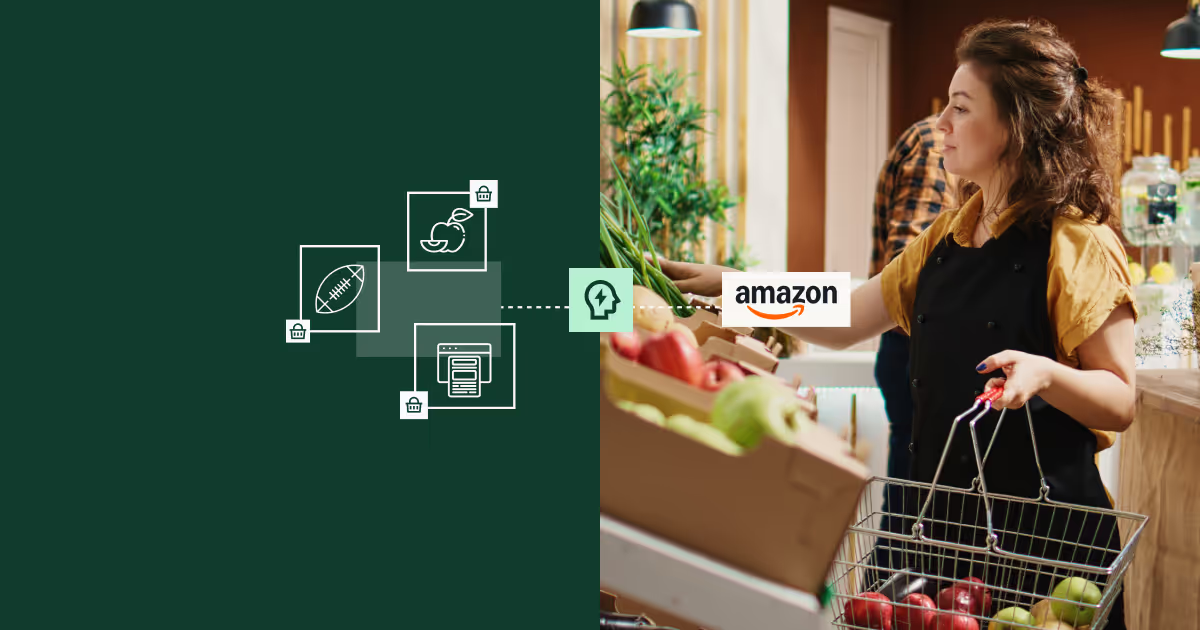
Amazon x NYT: Content, cooking, and commerce
In July, Amazon inked its first-ever content licensing deal with The New York Times, agreeing to pay $20 to $25 million per year to access news, cooking, and sports content. The goal is to use this high-quality content to enrich Amazon’s AI models and integrate Times content into products like Alexa or even directly into product detail pages.
At first glance, this partnership may seem surprising. After all, Amazon founder Jeff Bezos owns the Washington Post. But the Times brings something different: a massive library of cooking content and recipes, plus a robust sports vertical via The Athletic. The NYT Cooking app, for example, is already a staple for millions of home cooks and has set the bar for how digital inspiration turns into shoppable moments through its existing partnership with Instacart.
With this content powering Amazon’s AI models, shoppers can move from “What’s for dinner?” to a cart full of ingredients, delivered fast through Amazon Fresh. Imagine asking Alexa for dinner inspiration, receiving a NYT Cooking recipe, and adding every ingredient to your Amazon Fresh order in seconds. This is not just convenience. It is Amazon connecting content, commerce, and consumer need at a new level.
Amazon’s broader grocery pivot: Fresh, integrated
This partnership is arriving at a pivotal time for Amazon’s grocery business. After years of experimentation, Amazon is now integrating its Fresh and Core grocery operations, creating shifts in how brands engage with the platform and how consumers experience online grocery.
Here’s what’s changing:
- One Amazon grocery: Amazon is merging Fresh and Core teams, with Fresh resources now reporting into Core leadership. The “One-VM” program means grocery will be managed as a unified business, blurring the lines between center-aisle staples and fresh foods.
- Assortment and fulfillment: Amazon is piloting offering Fresh assortment items out of same-day fulfillment nodes. The “Perishables Pilot” results are promising so far. 75% of participants were new to Amazon Fresh, and 20% come back for another purchase within a month.
Recent orders in these pilot markets show refrigerated items and shelf-stable items arriving in separate bags, which signals that inventory is still managed separately, but integration is underway.
- Profitability and pricing: Amazon is shifting Fresh to an everyday low-price model, with more aggressive pricing and couponing, sometimes funded by Amazon and sometimes by brands. At the same time, brands are seeing more focus on per-ASIN profitability and mixed signals on long-term cost-to-serve.
Why does this matter for the future of grocery?
For years, Amazon’s grocery business has underperformed compared to its other retail categories, with growth mostly coming from shelf-stable essentials. Now, Amazon is making a bold play for the full basket.
This strategy is not just about selling more groceries. It is about creating a holistic, frictionless consumer journey, one that starts with inspiration through recipes and content, is personalized by AI, and ends with fast, convenient delivery from a single platform. The NYT deal unlocks new ways to drive engagement and dwell time (which opens the door for serving more ads), while the Fresh integration ensures Amazon can deliver on the promise of “recipe-to-table” shopping.
What’s next?
Expect more exclusive publisher content deals, deeper AI-powered personalization, and an ever-blurring line between content, commerce, and fulfillment on Amazon. For brands, now is the time to rethink your Amazon grocery strategy and prepare for a unified Amazon Grocery where digital and fresh are finally connected.
Ready to grow your business?
Let’s discuss the best approach to meet your brand’s specific needs.
Let's connect.avif)


